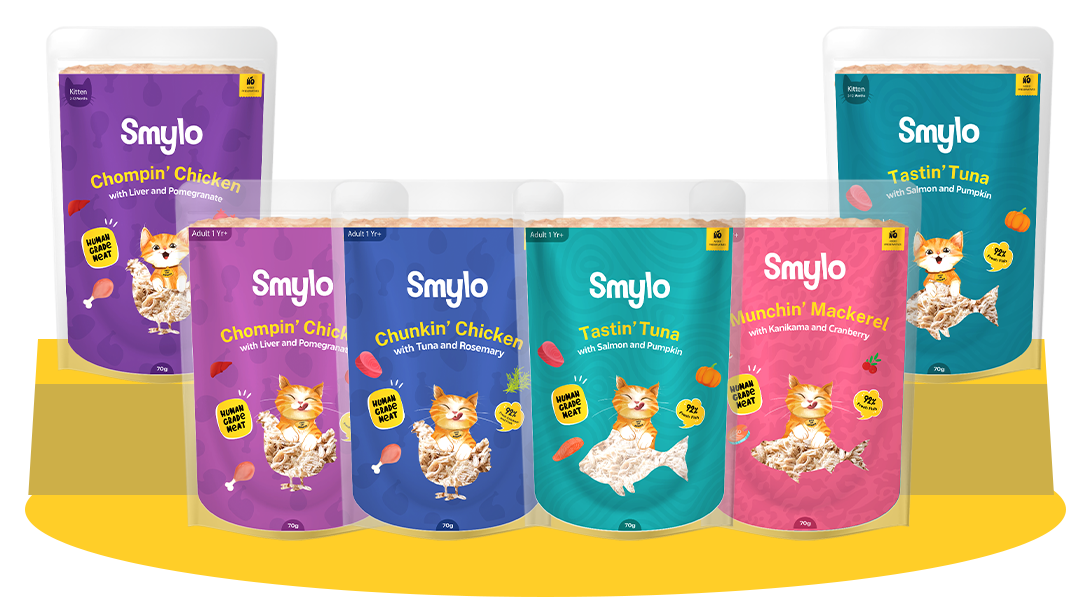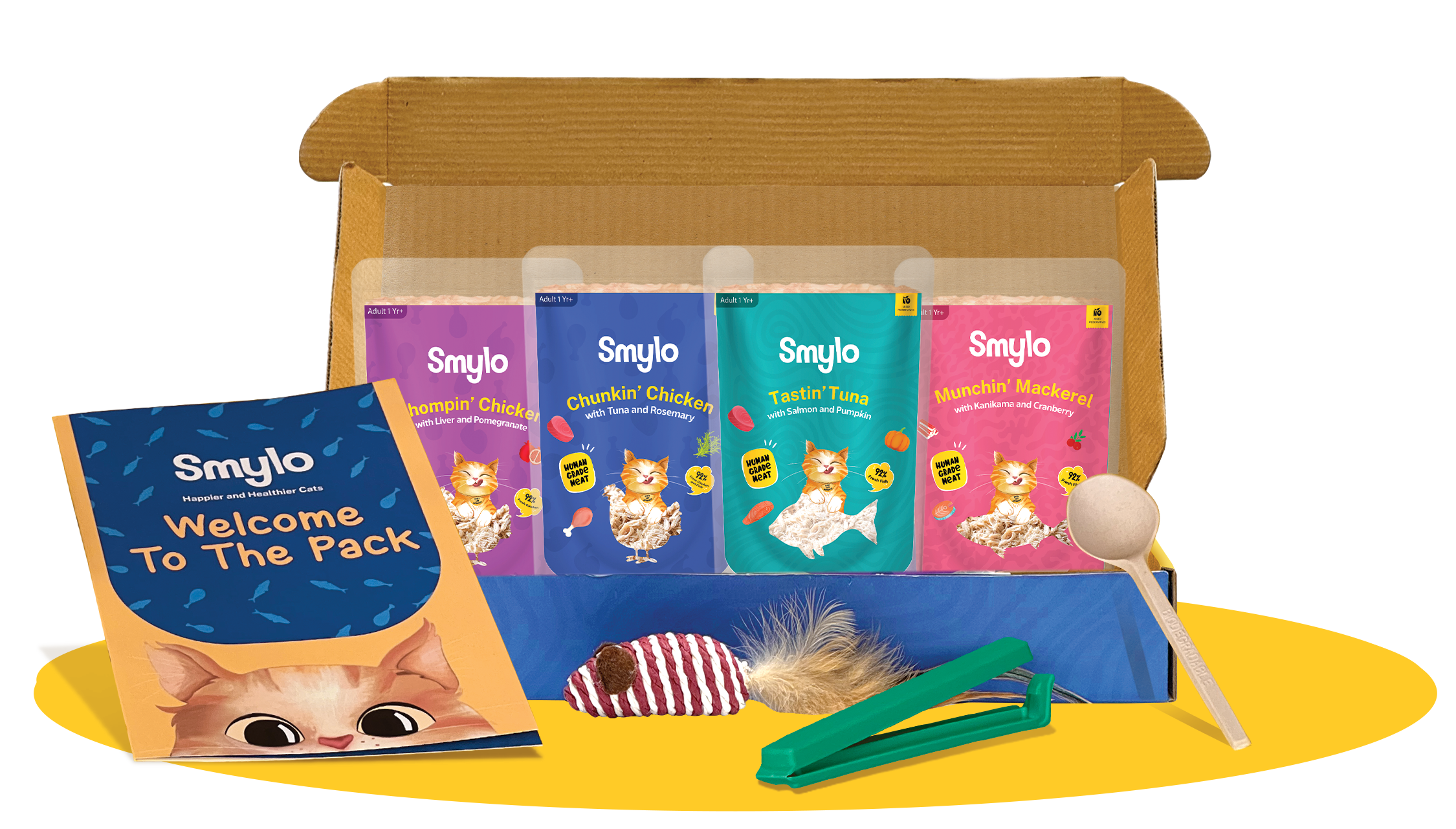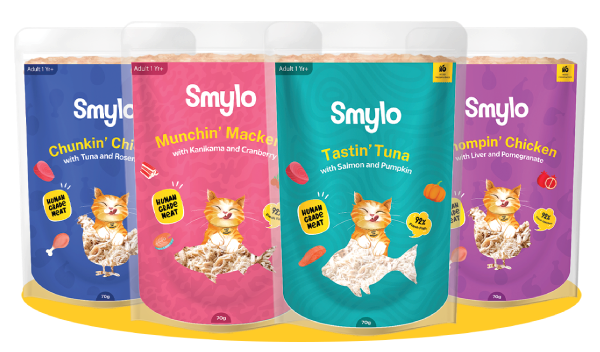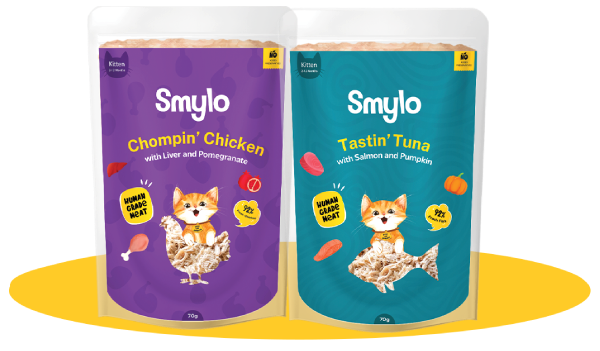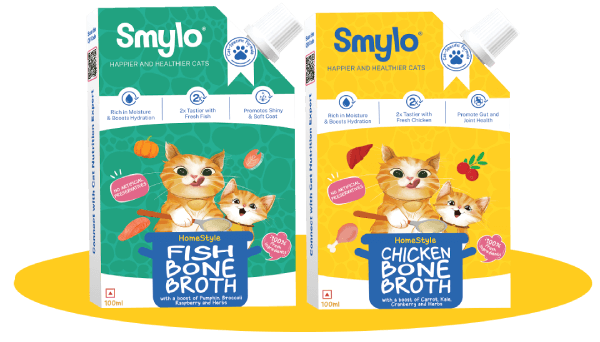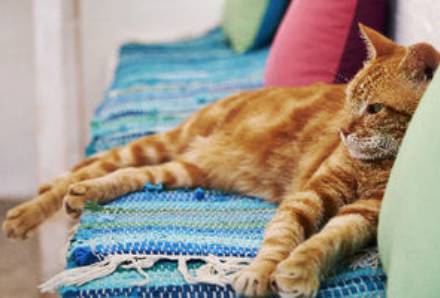Wondering what's the best cat food in India for your beloved feline companion? The best cat food brands in India include Royal Canin, Smylo, Farmina N&D, Smylo, and Whiskas, each offering specific nutritional benefits for different cat life stages and needs.
As a cat parent, choosing the right food can feel overwhelming with countless options available. Your cat's health and happiness largely depend on their diet, yet navigating through various brands, ingredients, and nutritional claims can be confusing.
In this comprehensive guide, we'll help you make an informed decision about your cat's nutrition. From understanding the essential nutrients your cat needs to comparing top brands across different price points, we've got you covered.
Whether you're a new cat parent or looking to upgrade your furry friend's diet, let's explore the world of cat nutrition together and find the perfect food that keeps your cat healthy and satisfied.
Key Takeaways:
- Both wet cat food and dry cat food options are available, with each type providing distinct benefits for your cat's overall health and dietary requirements.
- Premium ingredients and essential nutrients are crucial factors to consider when selecting the right food for your cat's specific needs and health concerns.
- Leading brands offer a wide range of cat food options suitable for different age groups, from kitten food to heavy meals for adult cats.
- The selection process should focus on natural ingredients, your cat's taste buds, and their delicate digestive system to ensure optimal nutrition.
Understanding Your Cat's Nutritional Needs
Essential Nutrients for Feline Health
Cats are obligate carnivores, which means they require a diet rich in animal-based proteins. Unlike dogs, cats cannot produce certain amino acids like taurine on their own. A balanced diet should include high-quality protein sources, essential fatty acids, and vital minerals to support their overall health.
Protein Requirements
Protein is the cornerstone of feline nutrition. Adult cats need at least 26% protein in their diet, while kittens require around 30%. The protein should come primarily from animal sources as they're more digestible and contain all the essential amino acids cats need for muscle maintenance, immune function, and growth.
How Smylo Delivers: Smylo provides 8.5% protein in wet adult formulas (equivalent to about 42.5% on a dry matter basis) and 9% in kitten formulas. Their recipes contain 92% fresh, human-grade meat sources including Tuna, Salmon, Chicken, and mackerel.
Importance of Taurine
Taurine is a critical amino acid that cats must obtain from their diet. This nutrient supports heart health, vision, and reproductive function. Without adequate taurine, cats can develop serious health issues like heart disease and retinal degeneration.
How Smylo Delivers: All Smylo formulas contain a guaranteed minimum of 0.2% taurine, supporting essential heart and eye health.
Fats and Fatty Acids
Healthy fats provide energy and help absorb fat-soluble vitamins. Omega-3 and Omega-6 fatty acids are particularly important for maintaining healthy skin, coat, and immune systems. These essential fats also support brain development in kittens.
How Smylo Delivers: Smylo contains 2.5% fat in adult recipes and 4% in kitten formulas, with added Omega-3, Omega-6, and fish oil for skin, coat, and brain health.
Hydration Needs
Cats naturally have a low thirst drive, inherited from their desert-dwelling ancestors. This makes moisture content in food crucial. While dry food typically contains 10% moisture, wet food contains up to 78%, helping prevent urinary issues and maintaining kidney health.
How Smylo Delivers: Smylo wet food provides exceptional hydration with 80% moisture content in adult formulas and 78% in kitten formulas. Each recipe begins with fresh broth as the first ingredient.
💡 Key Takeaway: Cats require a protein-rich diet with essential nutrients like taurine, healthy fats, and adequate moisture, making it crucial to choose food that meets these specific nutritional needs for optimal health. Smylo exceeds these requirements with fresh meat content, adequate taurine, essential fatty acids, and high moisture levels—all from human-grade ingredients.
Different Types of Cat Food Available
Dry Cat Food (Kibble)
Dry cat food, commonly known as kibble, is one of the most popular choices among pet parents in India. It offers several advantages, including convenience in storage and serving. The crunchy texture of kibble helps maintain dental health by reducing plaque buildup and strengthening teeth.
Most dry cat foods are fortified with essential nutrients, vitamins, and minerals to ensure complete nutrition. They typically contain around 30-40% protein content and have a longer shelf life compared to other types. The low moisture content (about 10%) makes them cost-effective and perfect for free-feeding schedules.
However, since cats naturally obtain most of their water intake from food, pet parents should ensure their felines have constant access to fresh water when feeding dry food. Some premium kibble brands also include special ingredients like omega fatty acids for coat health and probiotics for digestive support.
Wet Cat Food
Wet cat food closely mimics a cat's natural diet in the wild. Available in cans, pouches, or trays, these foods have high moisture content (around 75-85%), which helps keep cats hydrated. This is particularly beneficial for cats who don't drink enough water or those with urinary tract issues.
The soft, meaty texture is highly palatable and appeals to even the pickiest eaters. Wet foods generally contain higher protein levels and fewer carbohydrates compared to dry food. They're also easier to digest and can be an excellent choice for senior cats or those with dental problems.
One consideration with wet food is that it needs to be refrigerated after opening and consumed within 24 hours. It's also typically more expensive per serving than dry food. Many pet parents opt for a combination of both wet and dry food to provide their cats with varied nutrition and texture. To learn more about why wet cat food is essential for your cat's health, check out this informative article on dry vs. wet cat food.
💡 Key Takeaway: Cat food comes in two main types - dry kibble offering convenience and dental benefits, and wet food providing essential moisture and higher protein content, each with unique advantages for your feline's health and preferences.
Smylo: India's First Human-Grade Fresh Cat Food
Smylo has emerged as a game-changer in the premium cat food market, offering India's first 100% human-grade fresh cat food. Founded by two childhood friends and pet parents, Abhishek and Kartikeya, Smylo addresses the gap in the market for truly natural cat nutrition without preservatives, fillers, or by-products.
What sets Smylo apart is its commitment to using 92% fresh meat in every recipe, complemented by 8% fresh fruits, herbs, and essential nutrients. Their wet food pouches contain 80% moisture content, making them excellent for proper feline hydration. Each recipe is vet-formulated to meet international nutritional standards.
Smylo offers specialized formulations for both kittens and adults:
- For Adults: Varieties include Tastin' Tuna with Salmon and Pumpkin (supports kidney health and immune system), Chompin' Chicken with Liver and Pomegranate (helps with hairball control), Chunkin' Chicken with Tuna and Rosemary, and Munchin' Mackerel with Kanikama and Cranberry.
- For Kittens: Higher protein (9%) and fat (4%) content formulations with added colostrum for immune support and milk thistle for liver health.
Each 70g pouch (priced at ₹80) provides about 75-90 kcal with precise nutritional analysis: 8.5-9% protein, 2.5-4% fat, 0.2% taurine, and functional ingredients like cranberry and pomegranate for specific health benefits.
💡 Key Takeaway: Premium cat food brands in India like Royal Canin, Farmina N&D, Orijen, and Smylo offer scientifically formulated, high-quality nutrition with specialized formulas catering to various feline needs and life stages, with Smylo providing a unique fresh, human-grade option.
Age-Specific Cat Food Selection
Kitten Food (0-12 months)
Kittens need nutrient-dense food to support their rapid growth and development. Look for specially formulated kitten food with higher protein content (around 35%) and essential fatty acids like DHA for brain development. Royal Canin Kitten, Farmina N&D Kitten, and Smylo Kitten formulas are excellent choices, providing the perfect balance of nutrients.
Smylo's kitten formulations contain 9% protein and 4% fat (approximately 45% protein on a dry matter basis), along with added colostrum for immune support and milk thistle for liver health. Their kitten recipes provide 90 kcal per 70g serving. Explore our kitten food collection.
Adult Cat Food (1-7 years)
Adult cats require maintenance nutrition to sustain their energy levels and maintain optimal health. Choose foods with moderate protein content (26-30%) and controlled calories to prevent obesity. Brands like Whiskas Adult, Me-O Adult, and Smylo Adult offer well-balanced nutrition suitable for daily feeding.
Smylo's adult formulations contain 8.5% protein with specific functional ingredients like cranberry for urinary health, rosemary for antioxidant support, and pomegranate for immune health. Check out our adult cat food range.
Senior Cat Food (7+ years)
As cats age, their nutritional needs change significantly. Senior cats benefit from foods with easily digestible proteins, joint support ingredients, and controlled phosphorus levels. Smylo is ideal for senior cats with its high moisture content, digestible proteins, taurine for heart health, Omega fatty acids for joints, probiotics for digestion, and a preservative-free, natural formula supporting overall ageing feline wellness.
Special Considerations
Consider your cat's activity level and health conditions when selecting age-appropriate food. Indoor cats may need fewer calories, while active outdoor cats require more energy-dense nutrition. Always transition gradually between different life-stage foods to avoid digestive issues. For cats transitioning to premium fresh foods like Smylo, follow a 7-day transition plan to avoid digestive upset.
💡 Key Takeaway: Choose cat food specifically formulated for your pet's life stage, as nutritional needs vary significantly from kittenhood through senior years, ensuring optimal health and development at every age.
Choosing the Right Cat Food
Age and Life Stage Considerations
When selecting cat food, your pet's age and life stage play a crucial role. Kittens need more protein and calories for growth, while adult cats require balanced nutrition to maintain their health. Senior cats often benefit from specialized formulas with joint support and easier digestibility.
Health Status and Special Needs
Consider any existing health conditions your cat may have. Cats with urinary issues might need specific formulations, while overweight cats could benefit from weight management formulas. If your cat has food sensitivities, look for limited-ingredient options.
Quality of Ingredients
Focus on products with high-quality protein sources listed as the first ingredients. Look for named meat proteins like chicken, fish, or lamb rather than generic meat by-products. Avoid artificial preservatives, colours, and flavours that might trigger allergies or sensitivities.
Brands like Smylo take ingredient quality to the next level with 100% human-grade meat sources, making up 92% of their formulations. Their transparency about ingredient sourcing provides peace of mind for health-conscious pet parents.
Wet vs Dry Food Selection
Both wet and dry foods have their advantages. Wet food provides essential moisture and is often more palatable, making it ideal for picky eaters or cats with dental issues. Dry food offers convenience and helps maintain dental health through natural abrasion.
Fresh wet foods like Smylo with 80% moisture content can be particularly beneficial for cats prone to urinary issues or those who don't drink enough water.
Budget Considerations
While premium brands often provide better nutrition, they come at a higher cost. Consider mixing premium and mid-range options to balance quality with affordability. Remember that investing in quality nutrition can help prevent costly health issues later.
For premium fresh foods like Smylo (priced at ₹80 for 70g pouches), consider using them as part of a rotational diet or as a special nutritional boost alongside more economical daily options.
Reading Labels and Certifications
Always check for AAFCO certification on the packaging, which ensures the food meets basic nutritional requirements. Pay attention to guaranteed analysis percentages, particularly protein content. Look for foods that list specific meat sources rather than meat meals or by-products.
💡 Key Takeaway: Choose cat food based on your pet's age, health needs, and dietary requirements while considering ingredient quality, food type, and budget constraints to ensure optimal nutrition for your feline friend.
Tips for New Cat Parents
Understanding Your Cat's Nutritional Needs
As a new cat parent, it's crucial to understand that cats are obligate carnivores, meaning they require a diet rich in animal protein. Your feline friend needs specific nutrients that can only be found in meat-based diets to thrive and maintain optimal health.
Establishing a Feeding Schedule
Create a consistent feeding routine for your cat. Most adult cats do well with two meals a day, while kittens may need three to four smaller meals. Stick to regular feeding times to help regulate their digestion and prevent overeating.
Transitioning Between Foods
When switching cat foods, make the transition gradually over 7-10 days. Start by mixing a small amount of new food with the current food, slowly increasing the proportion of new food. This helps prevent digestive upset and ensures your cat accepts the new diet.
For premium fresh foods like Smylo, follow their recommended transition schedule:
- Day 1: 75% current food with 25% Smylo
- Day 2: 50% current food with 50% Smylo
- Day 3: 25% current food with 75% Smylo
- Day 4: 100% Smylo
Monitoring Food and Water Intake
Keep track of how much your cat eats and drinks daily. Sudden changes in appetite or water consumption can indicate health issues. Place water bowls in multiple locations around your home to encourage proper hydration.
Storage and Freshness
Store dry cat food in an airtight container in a cool, dry place. Always check expiration dates and avoid buying in bulk unless you can use it before it spoils. For wet food, refrigerate unused portions and discard any uneaten wet food after 24 hours.
Fresh foods like Smylo come with convenient storage clips to keep partially used pouches fresh in the refrigerator.
Common Feeding Mistakes to Avoid
- Feeding only dry food without providing adequate moisture
- Offering human food as treats frequently
- Leaving food out all day (free-feeding)
- Ignoring portion control guidelines
- Using plastic bowls that can harbour bacteria
💡 Key Takeaway: Successful cat feeding requires understanding your pet's nutritional needs, establishing consistent routines, and avoiding common mistakes while ensuring proper food storage and monitoring their intake patterns.
Benefits of Switching to Natural, Fresh Cat Food
Making the switch to natural, fresh cat food like Smylo can provide numerous health benefits for your feline friend:
Improved Digestion
Natural cat food made with human-grade ingredients is easier for cats to digest, leading to less odour in the litter box and fewer digestive issues. The absence of fillers and artificial additives means your cat's system processes the food more efficiently.
Enhanced Energy Levels
Many cat parents report increased energy and playfulness after switching to fresh, high-quality foods. The superior nutrition from human-grade ingredients provides more bioavailable nutrients and sustainable energy.
Healthier Coat and Skin
The high-quality proteins and essential fatty acids in premium fresh cat food contribute to a shinier, thicker coat and fewer hairballs. Omega-3 and Omega-6 fatty acids support skin health and reduce inflammation.
Fewer Health Issues
A natural diet closely aligned with a cat's biological needs can lead to fewer vet visits and reduced medication needs over time. Many common health issues are directly related to diet, and improving nutrition quality can have far-reaching benefits.
Better Hydration
Fresh wet foods with high moisture content (around 80%) help maintain proper hydration, supporting kidney function and urinary tract health—especially important for cats who don't drink enough water.
💡 Key Takeaway: Transitioning to natural, fresh cat food can provide significant health benefits including improved digestion, better coat condition, increased energy, and fewer health issues over time.
Conclusion
Choosing the right cat food is one of the most critical aspects of responsible pet parenting. By understanding your cat's specific nutritional needs and considering factors like age, health conditions, and preferences, you can make an informed decision that supports their overall health and well-being.
The Indian cat food market now offers options ranging from global premium brands like Royal Canin and Farmina N&D to innovative local options like Smylo's fresh, human-grade meals and budget-friendly choices like Whiskas. Remember that the best cat food is one that meets your feline friend's dietary requirements while fitting within your budget. Consider mixing different types of food to provide a balanced diet that keeps your cat both healthy and satisfied.
Take the time to transition gradually between foods, observe your cat's response, and consult with your veterinarian when needed. Your dedication to choosing the right food will reward you with a happy, healthy, and energetic companion for years to come. Ready to make the switch? Start by selecting one of our recommended brands and watch your cat thrive!
FAQs
What is the difference between grain-free and regular cat food?
Grain-free cat food contains no wheat, corn, or soy, focusing instead on protein-rich ingredients. While some cats benefit from grain-free diets, especially those with allergies, regular cat food with wholesome grains can still provide complete nutrition. The choice depends on your feline friend's specific dietary needs and health concerns.
How often should I feed my cat wet food versus dry food?
A balanced approach is recommended. Feed wet food 2-3 times daily and leave dry food available for grazing. Wet food provides hydration and is closer to a cat's natural diet, while dry kibble helps maintain the cat's teeth health. Adjust portions based on your cat's age, weight, and activity level.
Can I mix different brands of cat food?
Yes, you can mix different premium cat food brands as long as you introduce new foods gradually. This can provide varied nutrition and prevent your cat from becoming too picky. However, maintain consistency in quality and ensure all brands meet your cat's dietary requirements.
How do I transition my cat to a new food brand?
Gradually transition over 7-10 days to avoid digestive issues. Start with 25% new food mixed with 75% current food, then slowly increase the new food proportion. Watch for any signs of digestive upset and adjust the transition pace accordingly for your feline friend's comfort.
For premium fresh foods like Smylo, you can follow their four-day transition plan starting with 25% Smylo and 75% current food on day one and reaching 100% Smylo by day four.
What should I look for in cat food ingredient labels?
Focus on products listing high-quality protein sources (like chicken, fish, or turkey) as the first ingredient. Avoid artificial preservatives and look for natural ingredients. Essential nutrients like taurine should be present. Premium ingredients and clearly labelled components indicate better quality food.
Is homemade cat food a good alternative to commercial brands?
While homemade cat food can be an option, it's challenging to ensure all essential nutrients are included in the right proportions. Commercial cat food from renowned brands is formulated to meet complete nutritional requirements. Fresh, human-grade options like Smylo offer a middle ground between homemade and traditional commercial foods. If considering homemade food, consult a veterinary nutritionist first.
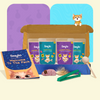 Someone viewed Kitten Starter Box (Pack of 8) 3 mins ago
Someone viewed Kitten Starter Box (Pack of 8) 3 mins ago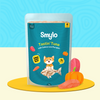 Someone viewed Tastin’ Tuna with Salmon & Pumpkin (Kitten) 9 mins ago
Someone viewed Tastin’ Tuna with Salmon & Pumpkin (Kitten) 9 mins ago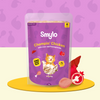 Someone viewed Chompin’ Chicken Liver & Pomegranate (Adult) 13 mins ago
Someone viewed Chompin’ Chicken Liver & Pomegranate (Adult) 13 mins ago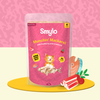 Someone purchased Munchin’ Mackerel with Kanikama & Cranberry (Adult) 21 mins ago
Someone purchased Munchin’ Mackerel with Kanikama & Cranberry (Adult) 21 mins ago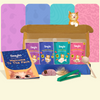 Someone viewed Adult Starter Box (Pack of 8) 15 mins ago
Someone viewed Adult Starter Box (Pack of 8) 15 mins ago

